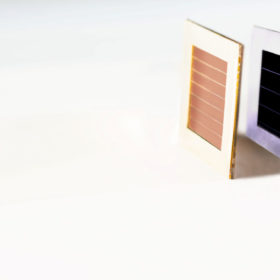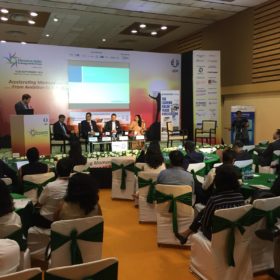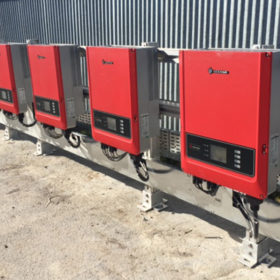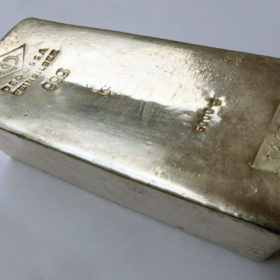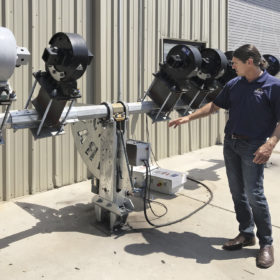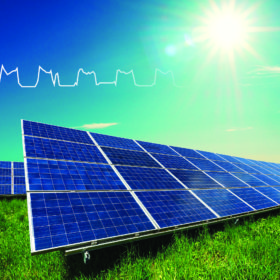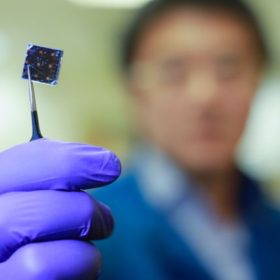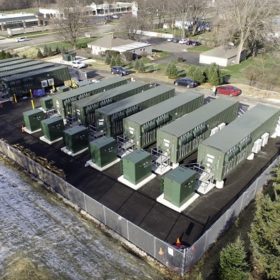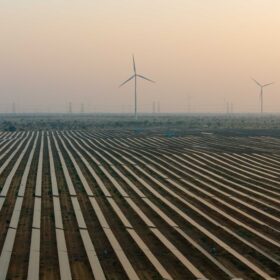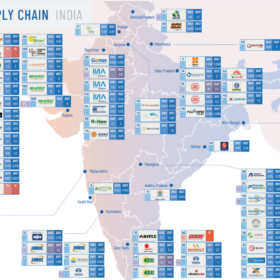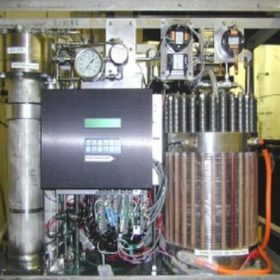Imec claims 24.6% efficiency for tandem CIGS cell based on perovskite
The Belgian research institute developed its cell in partnership with EnergyVille, Solliance and German research center, ZSW.
Better bifacial adoption, catalyzing innovation focus of Future PV Roundtable at REI
pv magazine’s Future PV Roundtable, held at the 2018 Renewable Energy India (REI) Expo in Greater Noida, discussed how India can better adopt bifacial solar cell and module technology – the future of power generation. Prominent industry speakers also put forth their views on how standards can catalyze solar innovation for India-specific challenges, and on PV materials and components for enhanced module efficiency and recycling.
Interview: GoodWe talks IPOs, policy changes and tripling production capacity
In an interview with pv magazine, vice president of GoodWe, Ron Shen, talks about the company’s plans for Germany, Spain, Africa and India, in addition to its goal to triple production capacity to 15 GW in China. He also discusses the effect of China’s 31/5 policy change, and plans for an initial public offering (IPO).
Making India’s solar sector resource efficient
By adopting resource efficiency measures, the Indian PV solar manufacturing sector can reduce its material requirement from an estimated 12 million tons to 8.2 million tons by 2030. The resource-efficient approach will also increase efficiency to more than 30% from 6% in 2018, according to a study conducted under the European Union’s Resource Efficiency Initiative (EU-REI) Project.
The long read: A new test for trackers
The benefits of deploying bifacial solar panels on single-axis trackers are touted like snake oil these days, with promises of anywhere from 5 to 50% gains in energy output compared with a monofacial panel. Unfortunately, the field data that might delineate the actual energy gain of a bifacial panel on a tracker are hard to acquire, and the data that are available typically describe small-scale tests under tightly defined conditions.
US scientists create MPP algorithm to measure PV panel degradation
The algorithm is said to be able to examine the relationship between weather forecast data and the projection of electric circuit parameters. Through this innovation, Purdue University researchers claim they can interpret the routinely collected maximum power point (MPP) time-series data, to assess the time-dependent “health” of installed solar modules.
PV installations in Q2 fall by half
In the second quarter, India installed solar projects amounting to 52% less capacity quarter-over-quarter, due to uncertainties around trade cases, module price fluctuations, and PPA renegotiations prompted by record low solar tender bids.
New efficiency record for perovskite-CIGS tandem
Researchers from the University of California, Los Angeles, have set a new record 22.4% conversion efficiency for a tandem cell combining a lead-based perovskite layer with CIGS technology. The record has been confirmed by the U.S. National Renewable Energy Laboratory.
Solar performance polluted by urban haze
Research conducted over several years by scientists at the Massachusetts Institute of Technology (MIT) demonstrates that air pollution in cities can put a dampener on the performance of PV panels which, if not taken into account, can threaten a project’s viability.
India’s solar dreams need storage push – IESA
With a rapid reduction in costs, solar plus storage can be an effective alternative for customers buying peak power from the grid. At the same time, utilities can avoid investments in peak capacity or eliminate load shedding by utilizing these resources.
